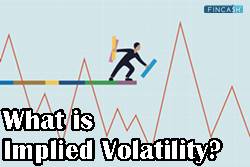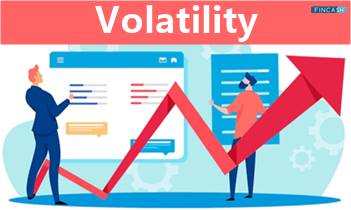Implied Volatility
What is Implied Volatility?
Implied Volatility refers to a metric that captures the view of the Market of the potential changes in a specific security’s price. Investors generally use this metric to plan future strategies along with supply and demand. Often, this one is also used to employ implied volatility to price options contracts.

As mentioned above, implied volatility is one such metric that investors use to evaluate future volatility of the security’s price on the Basis of specific anticipated aspects. Implied volatility can be defined by the symbol of sigma and could be considered as a proxy of risks in the market.
Explaining Implied Volatility
Commonly, it is expressed by using standard deviations and percentages over a certain time horizon. When implied volatility is applied to the stock market, it generally decreases in a bullish market, and the investors think that equity prices will elevate over time.
And, IV increases in bearish markets, where investors expect prices will decrease over time. Bearish markets, in a way, are regarded as undesirable; thus, riskier for a lot of equity investors. Implied volatility cannot be used to anticipate the direction where the price will move.
For instance, high volatility means there is a huge price swing. However, it could swing downward, very low, upward, very high or even fluctuate between two different directions. Low volatility, on the other hand, means that the price won’t make unpredictable, huge changes.
Talk to our investment specialist
Advantages and Drawbacks of Using Implied Volatility
Implied volatility is an essential concept when it comes to quantifying market sentiments. It evaluates the movement’s size that an asset is likely to take. But it doesn’t signify the movement’s direction.
Option writers use calculations, such as implied volatility to price options contracts, and more to assess the same. Below-mentioned are some of the advantages and drawbacks of using this method:
Advantages
- Measures the market uncertainty and sentiment
- Assists in setting options prices
- Comprehends Trading Strategy
Drawbacks
- Based only on prices and not basic concepts
- Sensitive to unexpected news, events and factors
- Only foresees movement
The CBOE and VIX
Investors and traders use charts to evaluate implied volatility. One of the special tools to do so is the Chicago Board Options Exchange (CBOE) Volatility Index (VIX). It was developed by the CBOE, and VIC is one real-time Market Index.
This index makes use of price data from near-the-money S&P 500 and near-dated index options to put expectations in front for volatility over the month.
All efforts have been made to ensure the information provided here is accurate. However, no guarantees are made regarding correctness of data. Please verify with scheme information document before making any investment.









